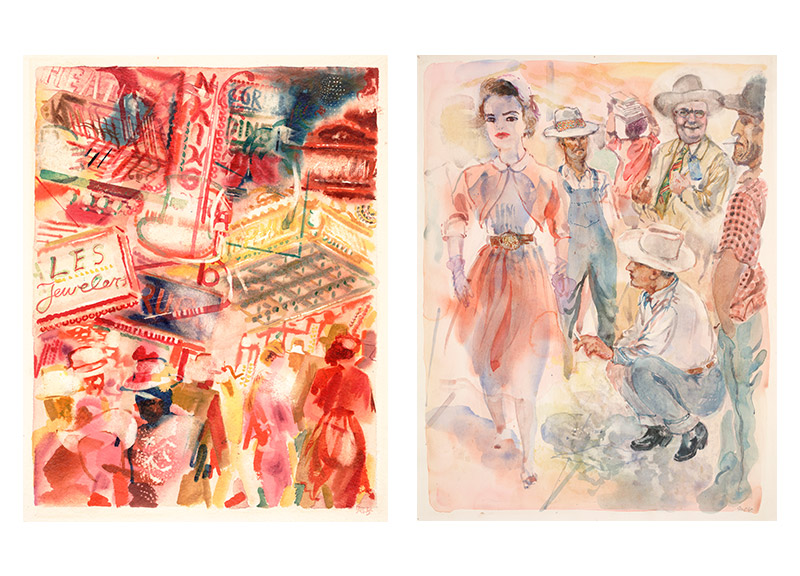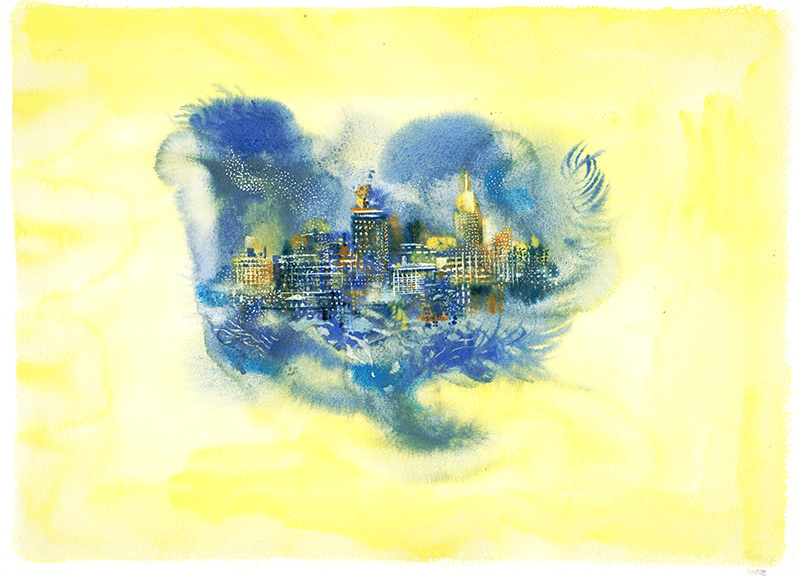This Weekend Is Your Last Chance to Visit The DMA's George Grosz Exhibit.
George Grosz was born German and raised the son of a bar owner. As a child, he was taught to draw and paint by an artist in his hometown. Later, he would study at Berlin College of Arts and Crafts and, in 1914, he would serve in the German military.
A year later, after being discharged from the armed forces for an illness, Grosz began experiencing conflicts with rising German military figures, who didn't take kindly to his paintings and sketches that were rich in militaristic and political satire.
After a series of his more aggressive work gained popular attention, the authorities fined Grosz, then seized and later destroyed his collection, labeling it “Degenerate Art.”
One week before Hitler came to power, Grosz managed to leave Germany for New York. By 1938, he and his family had become American citizens.
Fast forward to 1952 in the northeast of Texas, where thrives a century-year-old city called Dallas: In this buzzing metro lives one Leon Harris, a department store executive and patron of the arts. As Harris' retail market celebrates its 65th anniversary, he commissions George Grosz to visit Dallas and create a series of original works to document the city's booming economy and burgeoning culture.
Originally shown in 1954 at the Dallas Museum of Fine Arts in Fair Park, Grosz's exhibit offered a glimpse of Dallas through several watercolor cityscapes and three oil works of the cattle and cotton farming industries.
This summer, Flower of the Prairie: George Grosz in Dallas has again been put on display in our city, this time at the Dallas Museum of Art. The collection revisits the life and work of an artist influenced by German political and societal revolution, while chronicling Dallas' growth through a series of period photos, maps and digital installments.
Of course, most impressive is the show's revisiting of the commission offered to George Grosz by Leon Harris. Nearly all of the original pieces are featured, and the works are both geometric and vivid.
Perspectives of city skybuild are combined with daytime scene and a bustling nightlife imagery. Extraordinary character and color are preserved in Grosz' watercolors of landmarks such as the Adolphus Hotel, the Magnolia Building and the ever-present Pegasus in the sky.
At the close of the viewing hangs the crown jewel of the exhibit: Flower of the Prairie (1952), a sighting of Dallas, strong on the wispy horizon, looking very much a prosperous city rich with culture and cultivating art.
It's a fascinating look at our city, indeed. Unfortunately, this weekend is your last chance to see it, as the exhibit closes tomorrow evening. Catch it one last time either today or tomorrow during the museum's open hours between 11 a.m. and 5 p.m.


















































